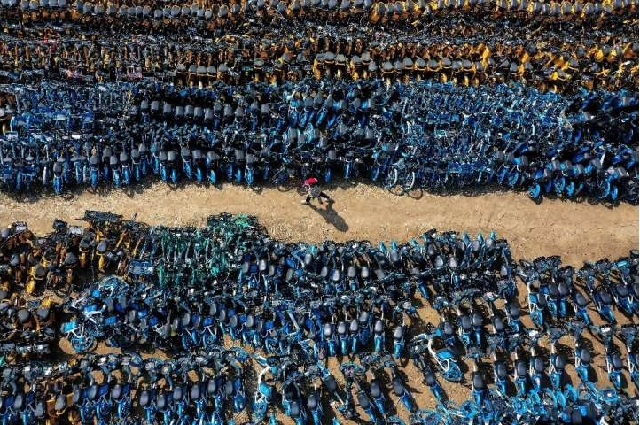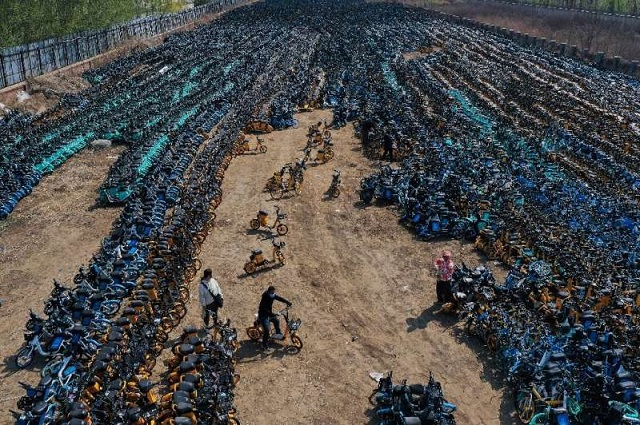Graveyard of the bikes: China's failed share
Rows of vibrant handlebars crisscross an open field just outside Shenyang, creating an unusual tableau—thousands of discarded bicycles, remnants of China's bike-sharing craze that has inundated its urban landscapes. Turquoise, blue, and yellow bikes, bearing the logos of major bike-sharing companies like Hellobike, Didi, and Meituan, form long lines, some stacked haphazardly.
The proliferation of low-cost shared bikes, accessible through mobile apps and conveniently parkable anywhere, initially surged in Chinese cities in the mid-2010s. Investors eagerly backed bike startups like the now-defunct Ofo and Mobike. However, the popularity of these two-wheelers led to challenges. Streets became cluttered as bikes spilled onto pavements and roadways, often left in disarray by users. The situation worsened as some bikes were damaged, stolen, or repurposed during the onset of the COVID-19 pandemic. This issue is not unique to China, as cities globally grapple with the challenge of corralling stray bikes, seen from Washington DC's metro stations to the riverbanks of Melbourne.

Aerial views of Shenyang's suburbs reveal a "bicycle graveyard, " one of many that emerged in 2018 when Ofo faced financial troubles, defaulting on debts as users sought refunds for rental deposits. Other companies followed suit, discarding mountains of damaged bikes, deviating from the eco-friendly image typically associated with urban cycling. Today, these discarded bikes vie for space on Chinese streets alongside an influx of shared electronic scooters, a trend also witnessed in cities like Paris and California. In response to the chaotic proliferation of bikes, Chinese cities, including Beijing, have pledged to rein in these fleets. Beijing, for example, plans to remove 44, 000 bikes from the city center this year, aiming to cap the total number of bikes at less than 800, 000, as reported by state media.




